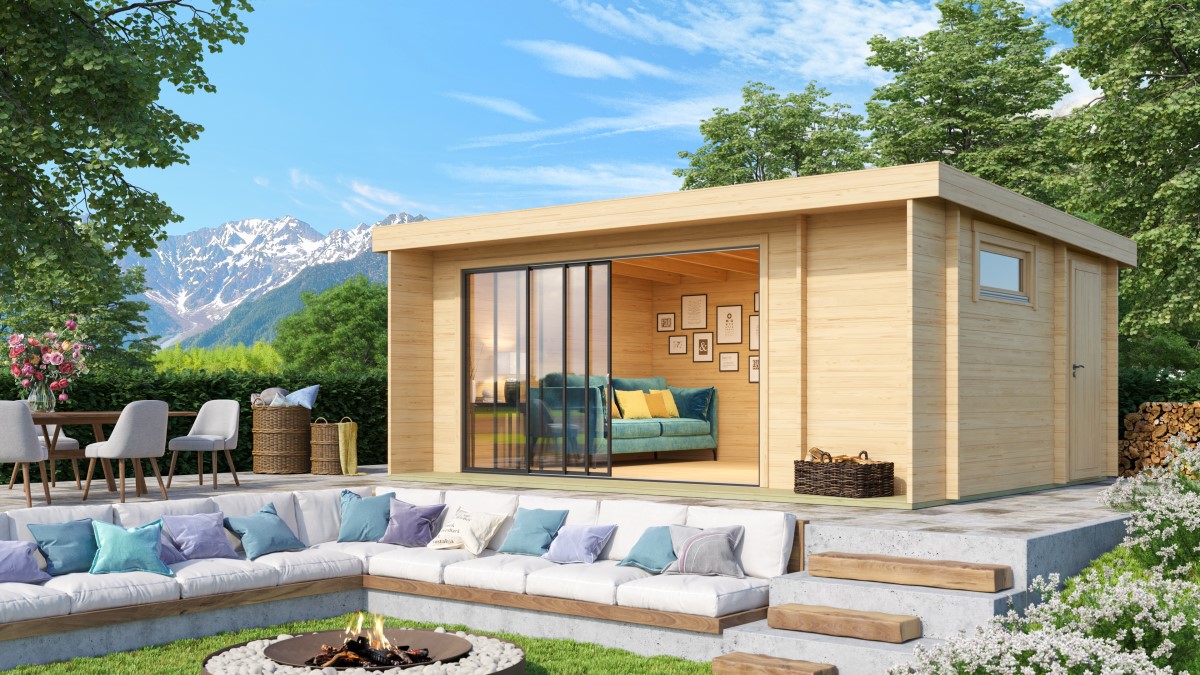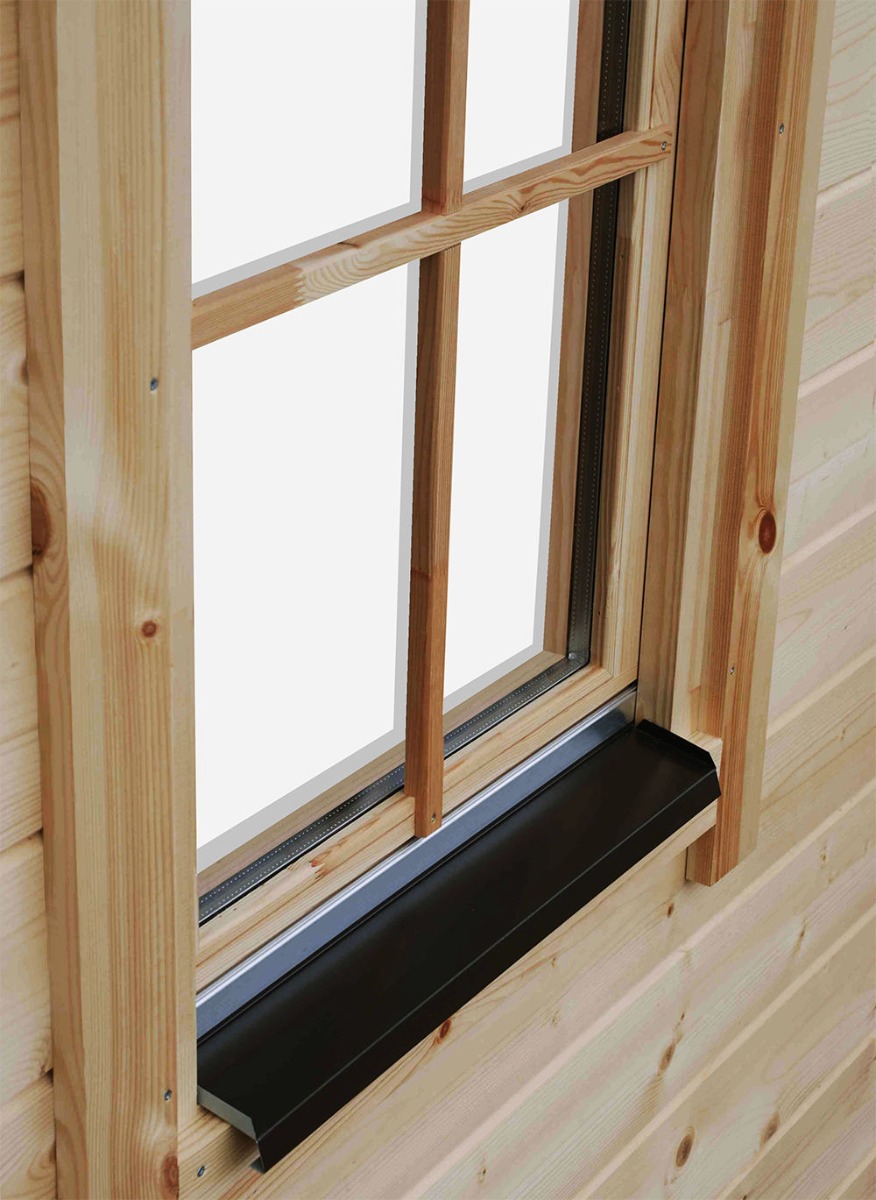
7 useful tips to consider before buying a wooden summer house

Planning on buying a summer house?
A garden house can be an idyllic meeting place or a practical storage room. Be it a tool shed, a lovely outdoor kitchen, or a peaceful home office, the materials' quality and proper construction are crucial.
What should you keep in mind when planning a building? Here are ten valuable tips for anyone who plans on buying a summer garden house.
1. Acquiring planning permission is the first priority (where required)
Outbuildings are considered permitted development, which does not need planning permission subject to the following limits and conditions:
- No outbuilding should be erected on land forward of a wall that forms the principal elevation.
- Outbuildings and garages are to be a single storey in height with a maximum height at the eaves of 2.5 metres and a maximum overall height of four metres with a dual pitched roof or three metres for any other roof.
- A maximum height is allowed of 2.5 metres in the case of a building, enclosure, or container within two metres of the boundary of the curtilage of the main dwelling house.
- No verandas, balconies, or raised platforms are permitted (a platform must not exceed 0.3 metres in height).
- No more than half of the area of land around the 'original house' can be covered by additions or other buildings.*
- In National Parks, the Broads, Areas of Outstanding Natural Beauty, and World Heritage Sites, the maximum area to be covered by buildings, enclosures, containers, and pools located more than twenty metres from the house are to be limited to ten square metres.
- On designated land, buildings, enclosures, containers, and pools at the side of properties will require planning permission.**
- Within the curtilage of any listed buildings, any outbuilding will require planning permission.
* The term 'original house' refers to the house as it was first built or stood on 1 July 1948 (if it was made before that date). Although you may not have built an extension onto the house, a previous owner may have done so.
** Designated land includes national parks and the Broads, Areas of Outstanding Natural Beauty, conservation areas, and World Heritage Sites.
2. Choose a suitable foundation for your wooden summer house

Recommended foundation types:
- Blocks or slabs on a sand or gravel base
- Paving stones
- A post-and-beam foundation
- A monolithic slab of reinforced concrete
You should select the type of foundation based upon the size of the garden house, the soil conditions, and the purpose of the house. Type 1 and 2 foundations are well suited for smaller and medium-sized garden houses. Building such a base is achievable for most people. You will need to dig between 25-35cm of soil, fill it with sand and gravel, and position the blocks or tiles. For larger than average garden houses, wooden summer houses, and saunas, type 3 and 4 foundations are better suited. Building these forms of foundation requires special knowledge, and it is advisable to use a professional service.
Regardless of the type of foundation, it is necessary to know that a perfectly level base is required to ensure the stability and durability of the wooden summer house.
It is impossible to build level walls on an unstable foundation, nor will the doors and windows work properly. At the same time, the five-year factory warranty will also become void.
3. Summer garden house installation. Self-assembly or hiring a building company?

The assembly of smaller and medium garden houses is achievable by a competent DIY enthusiast. Our statistics show that nine out of ten clients do the assembly themselves or hire one local expert for assistance. For the assembly, you need at least two adults, tools (hammer, saw, drill, screwdriver, measuring tape, ladder, knife, and spirit-level), and between one to three days of your precious time, depending upon your skill level and the scope of your project.
If gardening and construction work is not your cup of tea or if you do not have the time, it is always possible to order a house together with the assembly service. Ordering a home with a professional assembly service ensures the highest levels of quality and an ideal result.
When making your decision, we recommend that you objectively assess your skills and consult with GardenHouse24 specialists.
4. Everything you need to know about transportation and packaging when buying a summer house or garden house
Garden and summer houses are delivered in waterproof and rainproof packaging. Therefore a packaged summer garden house can be stored outdoors for weeks before assembly. Depending upon the size of the house, the package can weigh between 700-2,500kg. Crane vehicles, lorries equipped with a forklift, or standard haulage vehicles (provided that the necessary equipment for unloading is available at the destination) are used for transporting summer garden houses. All wooden components are ready to assemble.
A standard timber house set comprises:
- impregnated foundation beams
- untreated wall beams and other wooden components
- floor and roof boards
- glazed doors and windows
- fasteners (screws, nails, etc.)
- storm braces
- detailed instructions for assembling the summer garden house
All wooden parts are numbered or are otherwise clearly marked for an easy and straightforward assembly process.
5. How do you choose a suitable wall thickness?
The most common wall thicknesses for garden houses are 28mm, 40mm, 44mm, and 50mm. In the case of larger-than-average summer houses, saunas, and garden saunas, walls between 50-70mm thick are the most common.
Wall beams measuring 28mm usually have one groove and tongue. Such walls are solid and durable enough for garden sheds and small and medium-sized garden houses (a wooden building of up to 10m² in total floor space). They come at a favourable price.
The 40-50mm wall beams have two grooves and tongues and are ideal for medium-sized gardens and summer houses (covering a floor space of 8-20m²). Compared to 28mm walls, these walls are not only stronger but also provide better insulation.
In short, 28mm wall beams will suffice for building garden sheds and smaller seasonal garden houses (between 4–10m²). Still, for summer garden houses larger than 10m², it is recommended that you choose a wall thickness that is 40mm or upwards, especially if you want to add insulation and use the house all year round. It is necessary to buy a summer garden house with a wall thickness of at least 44mm and insulated windows for year-round use. When insulating a home, the insulation of the floor and roof should receive the most attention because approximately 35-40% of the heat escapes through the roof. An uninsulated floor is the main point of entry for cold air.
6. Single-pane or insulated windows?

If you buy a summer garden house for seasonal use, you can rest easy if you opt for thinner walls and single-pane windows. When buying a summer house, get affordable single-pane windows. It is impossible to install insulated windows on summer garden houses with a wall thickness of 28mm. As thinner walls provide low levels of thermal insulation, installing insulated windows would be irrational.
If you want to use your wooden summer house all year round, insulated windows are a must. The house should also be insulated, but you definitely need to buy a garden house with insulated windows.
Most wooden summer houses with a wall thickness of up to 40mm have single-pane windows; homes with a wall thickness of 44mm and up come with insulated windows as standard.
7. What size garden house should I buy?
A good multi-purpose garden house helps to save money and space in the garden. Buying a wooden summer house that comes with a terrace or veranda is much cheaper than buying a summer garden house and a bower separately. The same is true when comparing the price of a shed and wooden summer house combined with the cost of purchasing both products separately.
We also recommend that you give careful consideration to the size of the house before making a purchase.
Buying a summer house
When buying a summer house, it is wise to ask the entire family for their opinion and desires and work out the right size of garden building, so that there is enough space in it for hobbies and other activities. A garden house is an investment that will last for years to come.
Gardenhouse24 is one of the largest wooden house manufacturers in the Nordic region with more than seventy years of experience in timber log house manufacturing. As Nordic wood is of very high quality and value, Gardenhouse24’s garden houses are exported worldwide. More information about our garden houses is available HERE.


